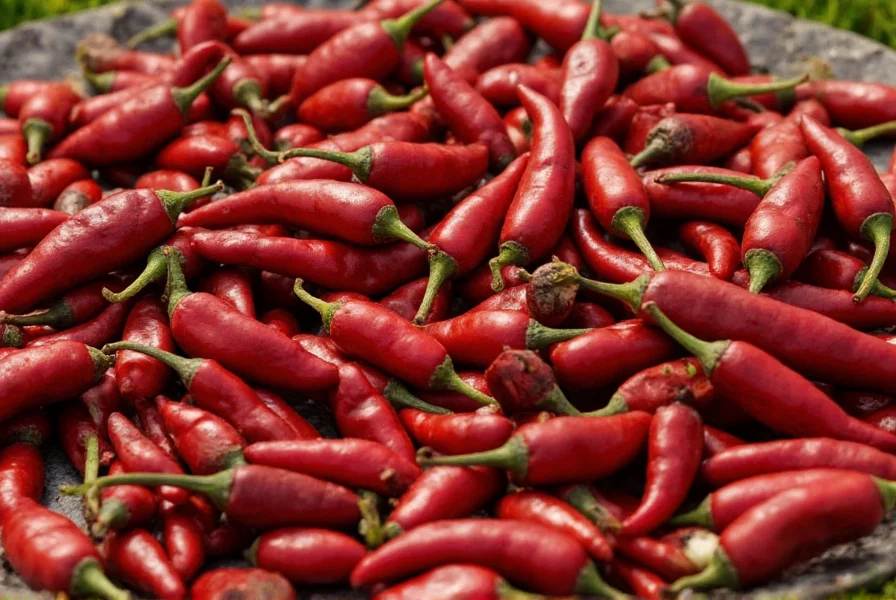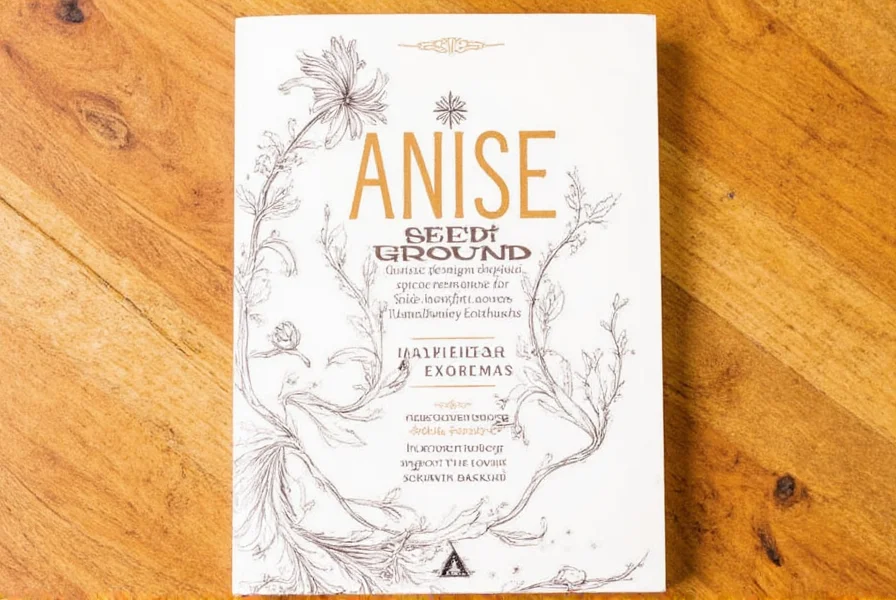Table of Contents
Exact Usage Ratios for Anise Seed Ground
Ground anise seed requires precise measurements to avoid overpowering dishes. For most recipes serving 4-6 people, use ¼ to ½ teaspoon of ground anise seed. When substituting for whole seeds, use ¾ the amount of ground spice (1 teaspoon whole seeds = ¾ teaspoon ground). For baked goods, ½ to 1 teaspoon per recipe provides optimal flavor without overwhelming other ingredients. Professional chefs recommend starting with smaller amounts, tasting, and gradually adding more as needed since ground anise intensifies during cooking.
Key Differences: Anise Seed vs Star Anise vs Fennel
| Spice | Flavor Profile | Substitution Ratio | Best Culinary Applications |
|---|---|---|---|
| Anise Seed Ground | Sweet licorice, subtle bitterness | 1:1 (base measurement) | Baked goods, Mediterranean meats, tomato sauces, liqueurs |
| Star Anise | Strong licorice, slightly medicinal | ½:1 (use half amount) | Asian braises, pho broth, mulled wine, Indian curries |
| Fennel Seed | Mild licorice, slightly peppery | 1.5:1 (use 50% more) | Sausages, seafood dishes, vegetable roasts, breads |

Understanding these ratios prevents common mistakes like overpowering dishes. Star anise contains anethole (the compound responsible for licorice flavor) at 80-90% concentration compared to 85-90% in anise seed, explaining why you need less star anise when substituting. Fennel seed has only 2-7% anethole, making it milder and requiring larger quantities for similar flavor impact.
Practical Tips for Using Anise Seed Ground
Optimize your use of ground anise with these chef-tested techniques:
- Measure precisely: Use measuring spoons (not eyeballing) since ¼ teaspoon makes a significant difference in flavor balance
- Add early in cooking: Incorporate during the initial sauté phase for savory dishes to allow flavors to mellow and integrate
- Bake at lower temperatures: Use in baked goods baked below 350°F (175°C) to preserve delicate flavor compounds
- Pair with complementary spices: Combine with ½ teaspoon cinnamon and ¼ teaspoon cardamom for enhanced depth in apple pies and coffee cakes
- Store properly: Keep in an opaque, airtight container in a cool, dark cupboard; ground anise retains peak flavor for 6-8 months (vs 2-3 years for whole seeds)
Cooking Uses of Anise Seed Ground
Ground anise seed transforms dishes when used correctly:
- European baking: Add ½ teaspoon to biscotti dough or gingerbread recipes for authentic flavor; essential in German springerle cookies (use 1 teaspoon per 2 cups flour)
- Mediterranean cuisine: Rub 1 teaspoon onto lamb chops before searing, or add to tomato-based stews (½ teaspoon per quart) for complex depth
- Beverage enhancement: Steep ¼ teaspoon in hot chocolate or coffee for a subtle licorice note; use ½ teaspoon in mulled wine recipes
- Homemade extracts: Combine 1 tablespoon ground anise with 1 cup vodka in a sealed jar; shake daily for 6 weeks to create anise extract (yields 1 teaspoon = 1 teaspoon ground anise)
Buying Guide for Anise Seed Ground
Ensure premium quality with these selection criteria:
| Quality Indicator | Acceptable Standard | Red Flags |
|---|---|---|
| Aroma intensity | Strong licorice scent detectable from 6 inches away | Faint or musty smell |
| Color | Uniform light brown to beige | Dark spots or inconsistent coloring |
| Texture | Fine powder without grittiness | Visible seed fragments or coarse particles |
| Expiration date | Within 6 months of grinding date | No date or >1 year old |
For optimal freshness, purchase small quantities (1-2 ounces) from brands that specify grinding dates. Penzeys Spices and The Spice House consistently provide high-quality ground anise with verified freshness dates. Avoid supermarket bulk bins where spices may have been exposed to light and air for extended periods.
Frequently Asked Questions About Anise Seed Ground
What's the exact substitution ratio for ground anise seed vs whole seeds?
Use ¾ teaspoon ground anise for every 1 teaspoon whole anise seeds. The grinding process increases surface area, making ground spice more potent. Always measure precisely using proper spoons - the difference between ½ and ¾ teaspoon significantly impacts flavor balance.
How much ground anise should I use in cookies or cakes?
For most baked goods serving 8-12 people, use ½ to ¾ teaspoon ground anise. In chocolate-based recipes, increase to 1 teaspoon as cocoa complements licorice notes. For delicate cakes like angel food, reduce to ¼ teaspoon. Professional bakers recommend adding half during mixing and the remainder after baking for optimal aroma.
Can I substitute fennel for ground anise in sausage recipes?
Yes, but use 1.5 times the amount of fennel seed (1 teaspoon ground anise = 1½ teaspoons ground fennel). Fennel has milder licorice notes and adds subtle peppery undertones that complement pork exceptionally well. For Italian sausage, combine 1 teaspoon ground fennel with ¼ teaspoon ground anise for authentic flavor.
Why does my ground anise taste bitter?
Bitterness occurs when ground anise is overheated (above 375°F/190°C) or used in excess. The compound estragole degrades at high temperatures, creating unpleasant notes. To prevent this, add ground anise during the last 10 minutes of cooking for savory dishes, or incorporate into cooled batter for baking. Always store away from heat sources to preserve flavor compounds.
How do I test if my ground anise is still fresh?
Sprinkle ¼ teaspoon in ½ cup hot water - fresh anise will create immediate, strong licorice-scented steam visible within 5 seconds. If steam appears weak or delayed beyond 15 seconds, the spice has lost potency. Properly stored ground anise maintains 80% flavor intensity for 6 months, dropping to 40% by 12 months.
What's the science behind anise seed's licorice flavor?
The compound trans-anethole (85-90% concentration in anise) binds to sweet receptors on the tongue while simultaneously activating trigeminal nerves, creating the characteristic cool-warm licorice sensation. This differs from star anise where anethole combines with shikimic acid, producing a more complex flavor profile with subtle numbing properties.
Conclusion
Mastering ground anise seed usage requires precision in measurement and understanding of its unique flavor chemistry. By following these exact ratios and techniques, you'll consistently achieve professional-quality results without overpowering your dishes. Remember that fresh, properly stored ground anise should deliver immediate, strong licorice aroma when exposed to heat - if not, replace your supply. The key to success lies in starting with small amounts (¼ teaspoon increments), allowing flavors to meld during cooking, and adjusting at the end for perfect balance. With these guidelines, you'll transform ordinary recipes into extraordinary culinary creations that showcase anise's distinctive character without overwhelming other ingredients.











 浙公网安备
33010002000092号
浙公网安备
33010002000092号 浙B2-20120091-4
浙B2-20120091-4